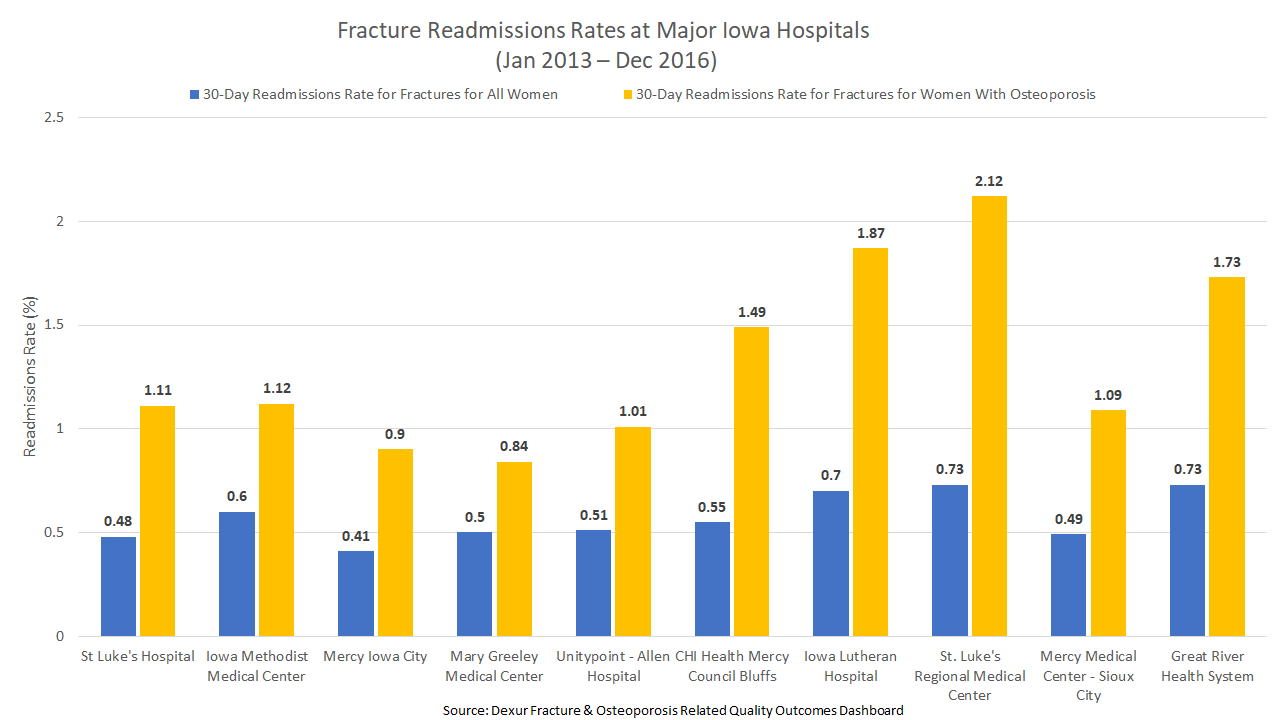A Study of 30 Day Fracture Readmissions in Iowa Hospitals Highlights Importance of Tymlos
In Tymlos, Osteoporosis
Get Dexur’s Personalized Hospital Specific Presentation on Quality, Safety, Compliance & Education
By: James Pitt May. 02, 2018
Osteoporosis is a common disease among the Medicare population, which causes bones to lose density and makes them more susceptible to fracture. A 2004 Surgeon General's Report projected that half the women and one quarter of men in the US are likely to have at least one osteoporosis-related fracture in their lifetime.
Hip fracture rates declined in the early 2000s, but a March 2018 study of CMS claims data found that hip fracture rates have leveled off. The rate of hip fractures declined from 884 per 100,000 women over age 65 in 2002 to 740 per 100,000 women in 2012. The figure then stayed at around that level through 2015. The researchers attribute this to decreased osteoporosis screening and treatment. In 2007, CMS cut reimbursements for dual-energy x-ray absorptiometry (DXA), the main method of osteoporosis screening. Prescriptions for osteoporosis medications also fell sharply from 2008 to 2012.
Interestingly, two 2017 developments may help boost osteoporosis treatment. First, CMS has reversed its osteoporosis screening cuts. Second, the FDA approved Radius Health's drug Tymlos (abaloparatide) for osteoporosis treatment in 2017. Tymlos is an anabolic therapy, which stimulates new bone formation. Compared to placebo, it reduced the relative risk of vertebral fractures by 86% and nonvertebral fractures by 43%. Bone mass density increases at 6 months were higher with Tymlos than with the previously used anabolic teriparatide.
A Dexur analysis examined how osteoporosis affects readmissions for fractures, using 2013-2016 CMS claims data for women at 10 major hospitals in Iowa. The weighted mean rate of fractures was 0.56% for all women and 1.23% for women with osteoporosis, with substantial variation across hospitals. Because osteoporosis is rarely diagnosed until after a fracture, the data may still understate the risk for this subpopulation. Given the magnitude of the problem, hospitals and healthcare payers should continue to invest in DXA screening and other osteoporosis solutions.

DEXUR PRO MEMBERS GET ACCESS TO:
- Total discharges and 30, 60, and 90-day readmission rates for all fractures at St Luke's Hospital; Iowa Methodist Medical Center; Mercy Iowa City; Mary Greeley Medical Center; Unitypoint - Allen Hospital; CHI Health Mercy Council Bluffs; Iowa Lutheran Hospital; St. Luke's Regional Medical Center; Mercy Medical Center - Sioux City; and Great River Health System.
- Osteoporosis-related discharges and 30, 60, and 90-day readmission rates for osteoporosis-related fractures at all of the above hospitals.
ABOUT THE AUTHOR
